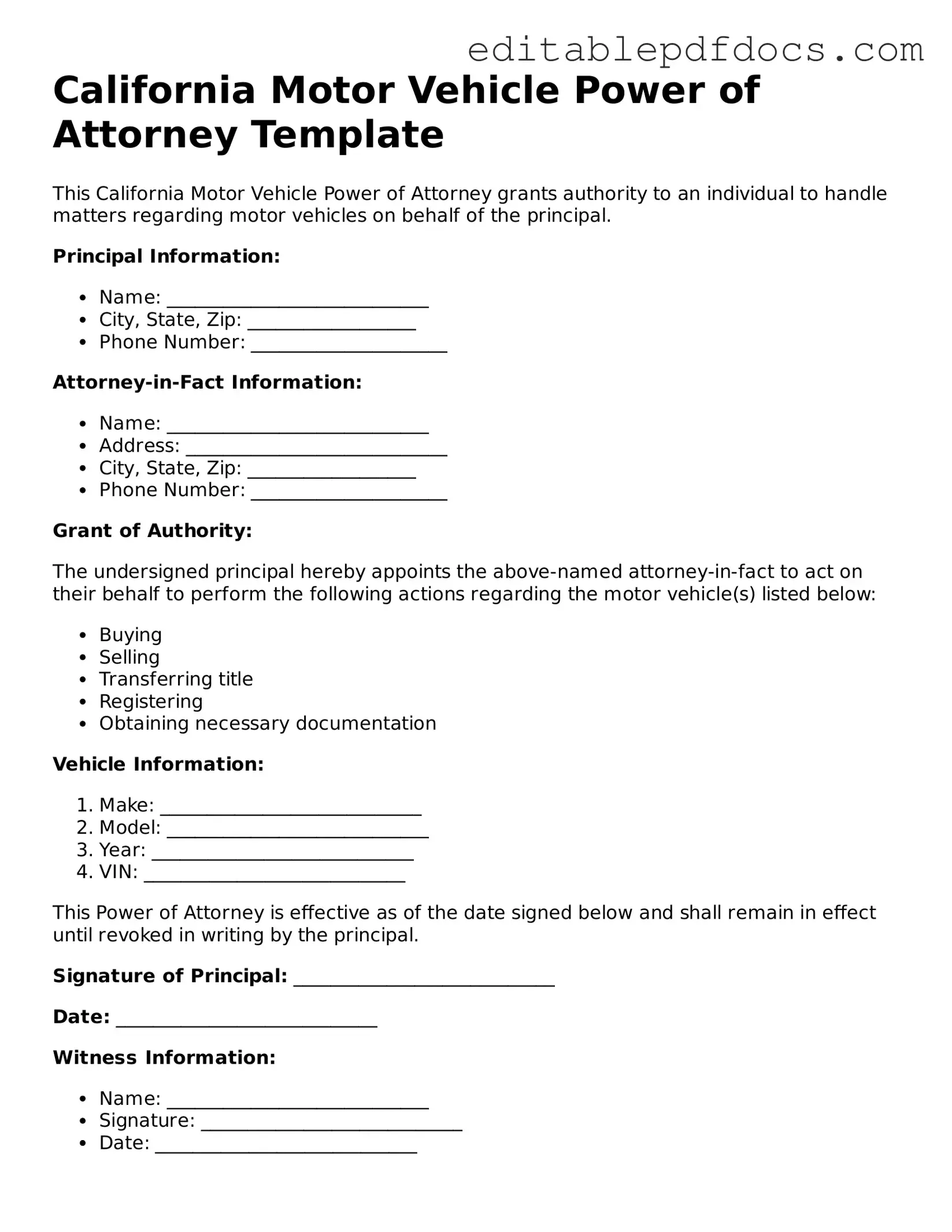Filling out the California Motor Vehicle Power of Attorney form can seem straightforward, but many people make common mistakes that can lead to complications. One frequent error is not providing complete information. When individuals leave out important details, such as the full names and addresses of both the principal and the agent, it can cause delays or even invalidate the document.
Another mistake occurs when the form is not signed correctly. Signatures must match the names printed on the form. If the signatures do not align, it raises questions about authenticity. Additionally, forgetting to date the document can create confusion regarding when the power of attorney takes effect.
People often overlook the need for witnesses or notarization. In California, while a notary is not always required, having the document notarized can add an extra layer of security. If the form is not notarized when it should be, it may not be accepted by the Department of Motor Vehicles.
Another common issue is failing to specify the powers granted. The form allows for various powers related to vehicle transactions. If the principal does not clearly outline what the agent can do, it may lead to misunderstandings. The agent might assume they have broader authority than intended.
In some cases, individuals forget to provide a clear expiration date for the power of attorney. Without this date, the agent may continue to act on behalf of the principal longer than necessary. It is essential to set a time limit to avoid potential misuse of authority.
Finally, people sometimes do not keep copies of the completed form. After filling out the document, it is wise to make copies for both the principal and the agent. This ensures that everyone involved has access to the same information and can reference it if needed.
